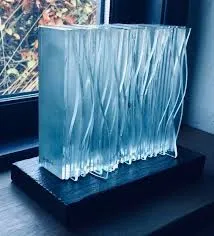The Multifaceted World of Reflective Glass and Mirrors
Reflective glass and mirrors have transcended their primary utility of reflection to become integral elements in architecture, art, design, and technology. This article explores the fascinating properties, applications, and the aesthetic significance of reflective glass and mirrors, shedding light on their dual role as functional objects and artistic materials.
Understanding Reflective Glass and Mirrors
Reflective glass is typically produced through a coating process where a thin layer of metal is applied to the surface of the glass, enhancing its reflective properties. Mirrors, on the other hand, are often made by backing a glass sheet with a reflective material, such as silver or aluminum. The result is a smooth, highly reflective surface that not only reflects light but also serves to manipulate and enhance the perception of spaces.
Architectural and Functional Applications
The use of reflective glass in architecture has soared in recent years. Skyscrapers adorned with reflective glass facades offer a striking appearance, allowing buildings to merge with their surroundings while providing energy efficiency. The reflective surfaces can reduce heat absorption and glare, improving the energy performance of modern constructions. In homes, reflective glass is commonly used in windows and sliding doors to create a seamless connection between indoor and outdoor spaces while maintaining privacy.
Moreover, mirrors play an essential role in interior design. They can create an illusion of depth and light, making small spaces feel more open and brighter. Strategically placed mirrors can enhance the aesthetic appeal of a room by reflecting light sources, such as lamps and natural light. Designers often leverage the reflective qualities to draw attention to specific areas, creating focal points that catch the eye.
Artistry and Creativity
reflective glass and mirror
Beyond practical applications, reflective glass and mirrors find their way into the art world as mediums for creativity. Artists manipulate these reflective surfaces to challenge perceptions and provoke thoughts. Installation art often incorporates mirrors to engage audiences in a dialogue about identity and self-perception. By reflecting the viewer and their surroundings, artists can make significant statements about existence and experience.
One iconic example is the work of artist Anish Kapoor, whose installations often play with reflection and light, creating immersive environments that invite viewer interaction. Similarly, contemporary artists employ reflective materials to create works that transform public spaces, encouraging viewers to engage with their surroundings in new and unexpected ways.
The Science of Reflection
The science behind reflection is equally intriguing. The laws of reflection state that when light hits a reflective surface, it rebounds at an equal angle to the angle of incidence. This principle underlies the functionality of mirrors and explains why reflective glass scatters and directs light in specific ways. The quality of reflection can be affected by the surface texture and coating of the glass, allowing for variations in clarity and distortion.
Advanced technologies have also transformed the production of reflective glass and mirrors. Innovations such as silvering techniques have improved durability and reflectivity. Moreover, smart glass technology allows for dynamic alterations; these glasses can transition from transparent to opaque, providing privacy on demand while maintaining a sleek, modern aesthetic.
Conclusion
Reflective glass and mirrors are more than mere objects of reflection—they are complex elements that influence architecture, interior design, and art. Their ability to manipulate light and perception opens up a world of possibilities, inviting creativity and innovation. As we continue to recognize the importance of these materials, both practically and artistically, the future promises exciting developments that will further enhance their role in our lives. Whether in the form of a sleek skyscraper, a decorative mirror, or a thought-provoking art installation, reflective glass and mirrors will continue to influence our environments and perceptions in profound ways.
 Afrikaans
Afrikaans  Albanian
Albanian  Amharic
Amharic  Arabic
Arabic  Armenian
Armenian  Azerbaijani
Azerbaijani  Basque
Basque  Belarusian
Belarusian  Bengali
Bengali  Bosnian
Bosnian  Bulgarian
Bulgarian  Catalan
Catalan  Cebuano
Cebuano  Corsican
Corsican  Croatian
Croatian  Czech
Czech  Danish
Danish  Dutch
Dutch  English
English  Esperanto
Esperanto  Estonian
Estonian  Finnish
Finnish  French
French  Frisian
Frisian  Galician
Galician  Georgian
Georgian  German
German  Greek
Greek  Gujarati
Gujarati  Haitian Creole
Haitian Creole  hausa
hausa  hawaiian
hawaiian  Hebrew
Hebrew  Hindi
Hindi  Miao
Miao  Hungarian
Hungarian  Icelandic
Icelandic  igbo
igbo  Indonesian
Indonesian  irish
irish  Italian
Italian  Japanese
Japanese  Javanese
Javanese  Kannada
Kannada  kazakh
kazakh  Khmer
Khmer  Rwandese
Rwandese  Korean
Korean  Kurdish
Kurdish  Kyrgyz
Kyrgyz  Lao
Lao  Latin
Latin  Latvian
Latvian  Lithuanian
Lithuanian  Luxembourgish
Luxembourgish  Macedonian
Macedonian  Malgashi
Malgashi  Malay
Malay  Malayalam
Malayalam  Maltese
Maltese  Maori
Maori  Marathi
Marathi  Mongolian
Mongolian  Myanmar
Myanmar  Nepali
Nepali  Norwegian
Norwegian  Norwegian
Norwegian  Occitan
Occitan  Pashto
Pashto  Persian
Persian  Polish
Polish  Portuguese
Portuguese  Punjabi
Punjabi  Romanian
Romanian  Russian
Russian  Samoan
Samoan  Scottish Gaelic
Scottish Gaelic  Serbian
Serbian  Sesotho
Sesotho  Shona
Shona  Sindhi
Sindhi  Sinhala
Sinhala  Slovak
Slovak  Slovenian
Slovenian  Somali
Somali  Spanish
Spanish  Sundanese
Sundanese  Swahili
Swahili  Swedish
Swedish  Tagalog
Tagalog  Tajik
Tajik  Tamil
Tamil  Tatar
Tatar  Telugu
Telugu  Thai
Thai  Turkish
Turkish  Turkmen
Turkmen  Ukrainian
Ukrainian  Urdu
Urdu  Uighur
Uighur  Uzbek
Uzbek  Vietnamese
Vietnamese  Welsh
Welsh  Bantu
Bantu  Yiddish
Yiddish  Yoruba
Yoruba  Zulu
Zulu 

